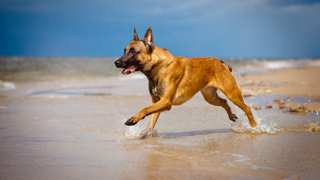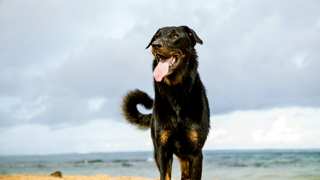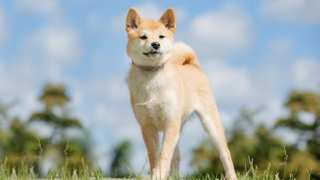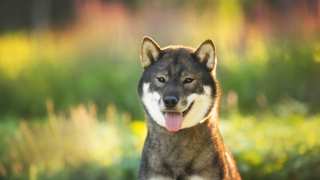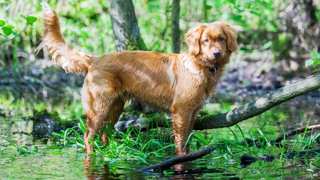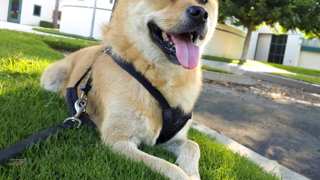This is a hunting and sledding breed with a strong work ethic, so Jamthund exercise requirements are pretty extensive. These dogs will need a variety of activities that condition them physically (walking, jogging, fetch) and stimulate them mentally (hunting, canine sports). They make good bicycling companions as well.
The typical adult Jamthund, depending on its age and overall activity level, will need at least an hour of proper exercise each day. You can start exercising your Jamthund puppy when it's three months old by taking it on short walks, then you can increase the walks' length as the puppy grows. And these early walks are a good chance to start leash training: make sure your puppy walks beside or behind you on the leash instead of being allowed to lead or "tug" on it. This, in the puppy's mind, establishes you as the leader, and will make training and discipline easier as the dog matures.
A few things to keep in mind with Jamthund exercise: first, puppies younger than nine months old shouldn't do too much jumping, running on hard surfaces, or navigating of stairs, as these can injure their still-developing joints and bones. And regardless of age, all Jamthunds must be leashed when in public! With their history as large game hunters, these dogs have very high prey drives, and will instinctively chase animals (both large and small) if allowed; Jamthunds will also be confrontational with other dogs if the situation arises. A leash will help you control the dog in these circumstances. Even when exercising in your own yard, the area will need to be securely fenced to keep these dogs from running away.
Precautions aside, exercising your Jamthund every day is simply a must. These energetic dogs have relatively primitive instincts, and without consistent activity they'll become highly destructive and possibly aggressive, and may even try to escape to freedom. Regular exercise will be great for both the dog's and your own peace of mind! A few exercise ideas:
- Walking/Jogging/Bicycling: Two 20-minute walks (or 15-minute jogs or bike rides) per day is a good target
- Fetch/Frisbee: These dogs normally love chasing a ball, stick, or Frisbee
- Tug-of-War: Great indoor activity; use a rope or old towel
- Hunting: Puts these dogs in their natural element
- Canine Sports: Jamthunds can excel in agility trials, rally, and other events
- Hiking: Excellent bonding activity; bonus if you can find a remote area where the dog can be off-leash
If your Jamthund spends time indoors, give the dog access to balls or toys that will let it burn excess energy. It's also a good idea to have a daily exercise schedule for the dog, such as walks, jogs, or bike rides after breakfast and dinner and a play period in the afternoon.
